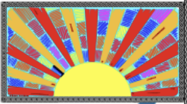
IHO MATUA: OUR PHILOSOPHY
Kootahi te kohao o te ngira
E kuhuna ai te miro maa, te miro whero, me te miro pango
A muri i a au kia mau ki te ture,
ki te whakapono, ki te aroha
Hei aha te aha! Hei aha te aha!
There is but one eye of the needle through which all must pass.
We celebrate our diversity, along with our commonalities.
NGAA TIKANGA: OUR WAY
Te Rapunga
To seek and grow
Te Whainga
To pursue dreams
Te Kukune
To extend with confidence
Te Pupuke
To expand influence
Te Hihiri
To energize and enlighten
TE TIROHANGA WHAANUI: OUR VISION
Naa te kuukune te pupukeFrom the conception the increase
Naa te puupuke te hihiri
From the increase the thought
Naa te hihiri te mahara
From the thought the remembrance
From the remembrance the consciousness
Naa te hinengaro te manako
From the consciousness the desire
Knowledge became fruitful
Knowledge, learning, and creativity are embedded within our cultural origins.
We sustain and enhance these origins through our own learning and the
teaching of others.
Paku whakamaarama
Knighton Normal School opened the first of its three partial immersion classes in 1999.
The junior class caters for children from year 0 to 2; the middle class, years 3 and 4; and the senior school, years 5 and 6. The classes operate at 50 to 80% immersion.
From the name of the marae which was once situated on our school site, coupled with the likening of the tamariki to the ‘rays of the sun’, came the name of our building.

Ngaa hihi o te ra
The tamariki and whaanau from Te Hihiri are Ngaa Waihihi
● Tainuitanga is promoted within the classes.
● Karakia is an integral part of the Te Hihiri programme.
● All children within these classes are involved in kapa haka as part of their curriculum.
● Marae visits are incorporated into the programme.
In Te Hihiri the tamariki are taught core curriculum subjects in English and te reo Maaori. Increasing levels of te reo are used in both content and instruction throughout the three classes, as appropriate to the age and abilities of the children. Up to 80% of delivery is in te reo Māori.
Ngaa Waihihi are a significant part of the school and the integration between Te Hihiri and the mainstream classes is regularly fostered.
We have the same expectations of tamariki in these classes as we have of tamariki in any class. The progress of all children in literacy and numeracy is monitored carefully.
Te whaanau o Te Hihiri
The whaanau plays an important role in the learning and success of tamariki.Therefore:
Whaanau are encouraged to become involved and contribute, as able, to the Te Hihiri team, their child/children’s classroom programme and school activities
The whaanau aims to meet every term in order to discuss any matters at hand, issues or ideas, and to foster whanaungatanga.Help is always appreciated in Te Hihiri, especially for:
● class trips and activities● kapa haka
● special skills you have to share
Guidelines for entry to Te Hihiri
● Children in zone
● Contributing Kohanga children
● Younger siblings of tuakana in the unit
● Children who have transferred from another immersion programme or Kura
Kaupapa Maaori
● Parents who are seen to be actively learning te reo, attending whānau hui, or actively
supporting the school.